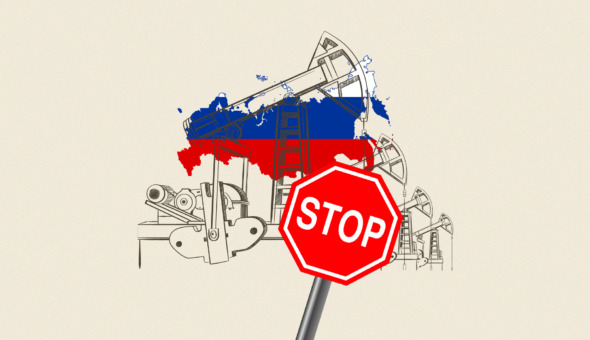
The russian federation’s invasion in Ukraine imposed a significant burden on the health-care system, which was caused not only by significant destruction and destruction of health-care facilities, but also by an increase in citizen demand for various types of medical care and services that were not prioritized by war, namely war-related wounds, injuries, and illnesses. And the primary goal of our project is to assist territorial communities in identifying priority health-care challenges and locating donors who can assist in resolving these issues.
Thus, according to official data, 118 objects were completely destroyed by the beginning of July 2022, and 633 objects of health care facilities were partially destroyed (destruction ranging from 2% to 90%). The preliminary cost of losses is nearly UAH 35 billion. According to information received from territorial communities, the project destroyed and damaged health care facilities in the following communities’ territories: Velikopysarivska hromada – 10% to 80%, Krasnopilska village council – 40%, Novgorod-Siversk hromada – 79%, Trostyanetsk – 40%.
“Migration of the population and medical workers has had a significant impact on the burden on the health-care system.” According to various data, 8-10 million Ukrainians became immigrants, while 2,273 medical workers left the country, accounting for 0.5% of all medical workers in the country. Furthermore, the war caused 1,714 doctors and 1,095 nurses to change jobs. In the occupied territories, there are 2,372 emergency medical care workers. Due to the understaffing of health care institutions in the occupied territories, a recruitment of medical workers from the capital’s medical institutions is being organized to work in the occupied territories on a shift basis, – ays Iryna Chibisova, an expert in the field of health care of the National Interests Advocacy Network “ANTS”. – The health care system’s lack of personnel and organizational capacity to provide rehabilitation and mental health services exacerbates the situation by ensuring citizens’ need for quality and affordable services. Most communities, including Apostolyivska, Bilopolska, Velikopysarivska, Volytska, Horodnytska, Drohobytska, Dubovykivska, Zolochivska, Korostenska, and others, lack rehabilitation departments or centers”.
According to the expert, rebuilding the Ukrainian health-care system would contribute to the return of medical professionals, who are the foundation for reviving the country from the effects of the war.
“Recovery should be focused primarily on the transformation of the health care system in accordance with citizens’ needs and available state resources, so that it is capable not only of providing citizens with quality and timely medical care, but also of responding to emergency situations in the field of various types of health care,” – she says.
Prior to the war, Ukraine’s health-care spending increased year after year, but it fell short of world standards as a share of GDP.
“Yes, total medical guarantee program (MGP) expenditures in 2021 amounted to 2.4% of GDP.” At the same time, a large proportion of patients’ out-of-pocket expenses remained – 49% of current health-care expenses. Prior to the start of the Ukrainian war, health-care spending was planned to be 5% of GDP. Despite the fact that new challenges related to the war emerged in the health care system, the National Health Service received only 2.2% of GDP. The lack of funds in the health care system has made it impossible to complete capital repairs that have begun, for example, in Trostyanetska, Drogobytska, Zolochynska, Korostenska, Ovrutska, and Pidhorodnenska, – says Iryna Chibisova. – In the hospital sector, Ukraine had nearly twice the number of hospitals as the countries in the WHO European Region (42 hospitals per 1 million population). Simultaneously, Ukrainian hospitals offered less intensive care: at least 20% of all inpatient cases could be treated as outpatients. Since the beginning of the medical reform, the inpatient medical care of health care institutions, defined as the secondary level, has undergone significant changes, particularly the bed fund. According to the results of analytical data on the number of patients who received services in the hospital, most hospitals in Ukraine significantly reduced the number of beds, some were even forced to liquidate the hospital altogether. And today, in communities, it is necessary to take into account the need for a bed fund, the transition to outpatient treatment of patients”.
The full-scale transformation of the health-care system began in 2017 with the adoption of the Ukrainian Law “On State Financial Guarantees of Population Medical Services.” The National Health Service of Ukraine was established in April 2018 as a single national customer of medical services (NHSU). Simultaneously, the process of autonomy of health care institutions began with a shift in management principles, with the transformation of communal budget institutions into communal non-commercial enterprises. This laid the groundwork for greater transparency and accountability, and thus for overcoming corruption in the form of hidden payments from patients and irrational use of investment and working capital. Already in July 2018, the NHSU signed the first contracts with autonomous providers of primary medical care based on the capitation rate – the legally mandated fee for one patient’s medical care. People now have the freedom to choose their own doctor. State and private PMD providers were given equal opportunities to provide services under the PMG framework of contracting with the National Health Service. Hospitals must have the necessary equipment, facilities, and conditions to provide medical services. According to the Law “On State Financial Guarantees of Medical Services of the Population,” the under-equipment of health care facilities makes them uncompetitive for the implementation of the Medical Guarantee Program (as amended). As a result, health-care institutions cannot earn enough money to support themselves. According to the information provided by the communities, they all have under-equipment issues. All of this is connected to the industry’s insufficient funding during the war.
“Streamlining the patient’s route is one of the mechanisms for optimizing the health care system.” Previously, patients were frequently referred to specialists and hospitalized without justification, bypassing the primary care link. This increased the burden on higher levels of medical care and hampered primary care development. Currently, under reform conditions, the population’s primary appeal is made exclusively to doctors of primary health care and emergency medical care. The implementation of the electronic system Helsi.me, in which doctors work, reflects the criteria of “accessibility” and “convenience” for citizens. Appointments for a doctor’s visit online, at a convenient time, without leaving the house, electronic referrals to specialists, and other types of additional examinations are well received by the general public. The implementation of an electronic system allows patients to receive their medical information more quickly, and doctors to make the correct diagnosis while considering the patient’s overall health. The system has eliminated the need for paper medical cards and certificates, and doctors now issue electronic prescriptions and hospital prescriptions that cannot be falsified. Patients can also track the availability of free medicines in specific hospitals thanks to the electronic health care system. However, many communities today lack or do not have an electronic system. And if the electronic document flow in the institution fails, it is impossible to fully implement the Law “On State Financial Guarantees of Medical Services to the Population,” because there is no electronic document flow between different levels of providing medical care, electronic referral has not been implemented, it is not possible to create and provide electronic prescriptions, it is impossible to reimburse medicines, and so on. These are such communities as Trostyanetska, Apostolska, Velikopysarivska,” – the expert emphasizes.
She emphasizes that the NHSU has been administering medication cost reimbursement (author: reimbursement) based on an electronic prescription since April 2019. As of February 18, 2022, 444 pharmaceutical products are eligible for reimbursement (“Affordable Medicines” program). This necessitates the use of electronic document management.
“The COVID-19 pandemic has revealed flaws in public health and emergency response systems, as well as a lack of national, regional, and local emergency preparedness plans and procedures in some cases. The establishment of the Public Health Center under the Ministry of Health of Ukraine marked the beginning of the transformation of the country’s public health system. Ukraine has implemented a number of large-scale measures to digitize the healthcare sector over the last four years. Electronic prescriptions, hospital certificates, vaccination certificates, and other documents have been introduced. The Medical Guarantee Program does not fully reflect the packages of priority services that become critical in the war and post-war period: treatment of injuries, burns, rehabilitation, mental health services, and, of course, PMD. State health-care programs “do not take into account the losses of the health-care system, the losses incurred, and the necessary changes in health-care priorities,” – tells the expert.
Iryna Chibisova named 9 necessary steps to implement the recovery of the health care sector:
- Strengthening national health system policies and institutions to guide the recovery process.
- Ensure the financial stability of the health care system by addressing this issue in a variety of ways, including encouraging donors, increasing total public spending on health care, prioritizing health care in general budget expenditures, consolidating the pooling of funds for individual medical services at the national level under the NHSU and gradually increasing its potential as a single strategic purchaser of medical services, and implementing flexible and result-oriented policies.
- Reconstruction and transformation of the healthcare facility network.
- Strengthening medical services to meet the unique needs of people affected by war (including IDPs and war veterans).
- Strengthening and boosting the health-care system’s human resources.
- Electronic health care development and cyber security enhancements.
- Strengthening the quality management system.
- Rebuilding the pharmaceutical sector, as well as improving access and medication use.
The material was created as part of the project “Strengthening Communities For Ukraine’s Victory and Revival”, “Strengthening Public Trust” USAID/UCBI III.
This project “Strengthening Communities For Ukraine’s Victory and Revival”, “Strengthening Public Trust” USAID/UCBI III is implemented with the support of the United States Agency for International Development (USAID).



